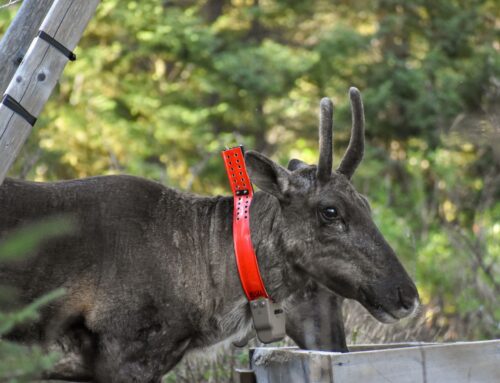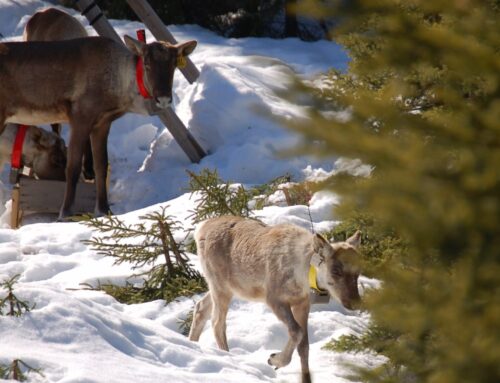The author is a professor at UQAM. He co-authored this text with 37 specialists who are members of the Centre d’étude de la forêt (CEF), a strategic grouping of the Fonds de recherche du Québec – Nature et technologies (FRQNT).*
Published on May 7, 2022
Source: Pierre Drapeau, Le Devoir
The issue of woodland caribou has been in the news lately and a decision will soon be made about its protection. The scientific community has proposed several realistic solutions such as closing roads after harvesting to limit access to predators and maintaining the old-growth forests necessary for caribou – among other things, by increasing the number of protected areas in large massifs. These solutions are often dismissed by economic arguments. However, these arguments could easily be circumvented if we could account for the benefits of these practices on ecological services other than wood production. One of these services can be quantified and monetized in Quebec: the sequestration of atmospheric carbon.
Among the benefits of sustainable forest management practices, carbon sequestration is probably the one that could most effectively justify the costs of maintaining the large forest stands required to sustain caribou populations within the territories occupied by the caribou. In areas where harvesting would be concentrated, longer rotations and partial harvesting, rather than full harvesting, would significantly increase the amount of carbon sequestered by managed forests, including preserving vegetation and soil carbon sinks, increasing the size of harvested trees, and maintaining a mature forest cover.
This would also preserve habitat for many other species, both plant and animal, and could increase the resilience of forests to climate change. Reforestation of forest roads, as well as intensification of management on smaller but more productive areas near communities and wood processing centers, are other options that could also help sequester significant amounts of carbon while offsetting reductions in harvesting elsewhere on the land.
The solution is simple: why not use part of the billions collected in the Green Fund (the Electrification and Climate Change Fund) via the cap-and-trade system (the “carbon market”) for the forestry sector, in order to increase the sector’s leeway and create financial incentives for sustainable forest management that would include the protection of biodiversity?
The latest IPCC report establishes this strategy as a priority for limiting climate change. Another approach would be to allow carbon credit projects on public land in order to finance initiatives that are useful in the fight against climate change and compatible with sustainable forest management, thus creating new economic activity.
We therefore propose that Quebec’s efforts to reach its GHG emission reduction targets be transferred to the forest. This strategy, known as nature-based solutions, is widely recognized by science and major international organizations and would be a winner on all fronts by making it possible to protect the caribou, an emblematic species for biodiversity, whose cultural value is essential for several First Nations, while contributing to the fight against climate change. And this, while preserving the forest resource as a key economic driver for several regions of Quebec.
Not to seriously consider this option would be incomprehensible and unacceptable to much of the scientific community and the general public. We therefore call on the Quebec government to quickly do this accounting and to determine how the money currently spent on reducing GHG emissions, or the money generated by carbon credits, could stimulate forest sector revenues and long-term supplies, and help maintain caribou habitat and forest carbon sinks.
*Also signed as lead authors: Xavier Cavard (UQAT), Yves Bergeron (UQAT-UQAM), Jean-François Boucher (UQAC)
The complete list of other co-signers :
Nicolas Bélanger (TÉLUQ), Marc Bélisle (U. de Sherbrooke), Étienne Boucher (UQAM), Yan Boulanger (UQAR), Jean Bousquet (U. Laval), Jérôme Cimon-Morin (U. Laval), Louis de Grandpré (Natural Resources Canada), Sylvain Delagrange (UQO), Loïc D’Orangeville (U. New Brunswick), Frédérik Doyon (UQO), Jérôme Dupras (UQO), Angélique Dupuch (UQO), Elise Filotas (TÉLUQ), Richard Fournier (U. de Sherbrooke), Daniel Fortin (U. Laval), Tanya Handa (UQAM), Daniel Kneeshaw (UQAM), Cornelia Krause (UQAC), Michel Labrecque (Université de Montréal), Isabelle Laforest-Lapointe (U. de Sherbrooke), Serge Lavoie (UQAC), Alain Leduc (UQAM), François Lorenzetti (UQO), Marc J. Mazerolle (U. Laval), Alain Paquette (UQAM), David Paré (Natural Resources Canada), David Rivest (UQO), Sergio Rossi (UQAC), Jeannine-Marie St-Jacques (Concordia), Martin-Hugues St-Laurent (UQAR), Martin Simard (U. Laval), Osvaldo Valeria (UQAT)





